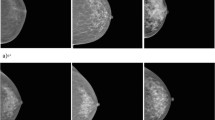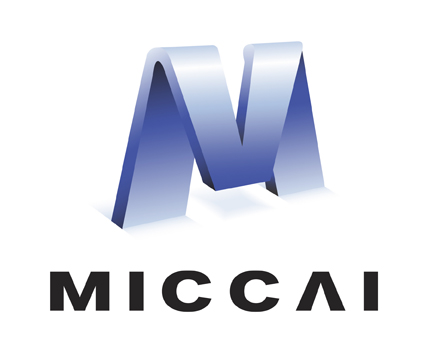Abstract
Unsupervised anomaly detection models that are trained solely by healthy data, have gained importance in recent years, as the annotation of medical data is a tedious task. Autoencoders and generative adversarial networks are the standard anomaly detection methods that are utilized to learn the data distribution. However, they fall short when it comes to inference and evaluation of the likelihood of test samples. We propose a novel combination of generative models and a probabilistic graphical model. After encoding image samples by autoencoders, the distribution of data is modeled by Random and Tensorized Sum-Product Networks ensuring exact and efficient inference at test time. We evaluate different autoencoder architectures in combination with Random and Tensorized Sum-Product Networks on mammography images using patch-wise processing and observe superior performance over utilizing the models standalone and state-of-the-art in anomaly detection for medical data.
M. Dietrichstein and D. Major—Equal contribution.
Access this chapter
Tax calculation will be finalised at checkout
Purchases are for personal use only
Similar content being viewed by others
References
Bhatt, N., Prados, D.R., Hodzic, N., Karanassios, C., Tizhoosh, H.R.: Unsupervised detection of lung nodules in chest radiography using generative adversarial networks. In: Proceedings of EMBC, pp. 3842–3845. IEEE (2021)
Bowles, C., et al.: Brain lesion segmentation through image synthesis and outlier detection. NeuroImage: Clin. 16, 643–658 (2017)
Choi, Y., Vergari, A., Van den Broeck, G.: Probabilistic circuits: a unifying framework for tractable probabilistic models. Technical report, UCLA (2020)
Heath, M., Bowyer, K., Kopans, D., Moore, R., Kegelmeyer, W.P.: The digital database for screening mammography. In: Proceedings of the International Workshop on Digital Mammography, pp. 212–218. Medical Physics Publishing (2000)
Higgins, I., et al.: Beta-VAE: learning basic visual concepts with a constrained variational framework. In: ICLR (2017)
Kingma, D.P., Welling, M.: Auto-encoding variational Bayes. arXiv preprint arXiv:1312.6114 (2013)
Lee, R.S., Gimenez, F., Hoogi, A., Miyake, K.K., Gorovoy, M., Rubin, D.L.: A curated mammography data set for use in computer-aided detection and diagnosis research. Sci. Data 4(1), 1–9 (2017)
Marimont, S.N., Tarroni, G.: Anomaly detection through latent space restoration using vector quantized variational autoencoders. In: Proceedings of ISBI, pp. 1764–1767. IEEE (2021)
Masci, J., Meier, U., Cireşan, D., Schmidhuber, J.: Stacked convolutional auto-encoders for hierarchical feature extraction. In: Honkela, T., Duch, W., Girolami, M., Kaski, S. (eds.) ICANN 2011. LNCS, vol. 6791, pp. 52–59. Springer, Heidelberg (2011). https://doi.org/10.1007/978-3-642-21735-7_7
Van den Oord, A., Vinyals, O., Kavukcuoglu, K.: Neural discrete representation learning. In: Proceedings of NIPS, pp. 6309–6318 (2017)
Peharz, R., et al.: Einsum networks: fast and scalable learning of tractable probabilistic circuits. In: Proceedings of ICML, pp. 7563–7574. PMLR (2020)
Peharz, R., et al.: Random sum-product networks: a simple and effective approach to probabilistic deep learning. In: Uncertainty in Artificial Intelligence, pp. 334–344. PMLR (2020)
Poon, H., Domingos, P.: Sum-product networks: a new deep architecture. In: Proceedings of ICCV Workshops, pp. 689–690. IEEE (2011)
Sato, D., et al.: A primitive study on unsupervised anomaly detection with an autoencoder in emergency head CT volumes. In: Medical Imaging 2018: Computer-Aided Diagnosis, vol. 10575, p. 105751P. International Society for Optics and Photonics (2018)
Schlegl, T., Seeböck, P., Waldstein, S.M., Langs, G., Schmidt-Erfurth, U.: f-AnoGAN: fast unsupervised anomaly detection with generative adversarial networks. Med. Image Anal. 54, 30–44 (2019)
Seeböck, P., et al.: Exploiting epistemic uncertainty of anatomy segmentation for anomaly detection in retinal OCT. IEEE Trans. Med. Imaging 39(1), 87–98 (2019)
Simarro Viana, J., de la Rosa, E., Vande Vyvere, T., Robben, D., Sima, D.M., et al.: Unsupervised 3D brain anomaly detection. In: Crimi, A., Bakas, S. (eds.) BrainLes 2020. LNCS, vol. 12658, pp. 133–142. Springer, Cham (2021). https://doi.org/10.1007/978-3-030-72084-1_13
Trapp, M., Peharz, R., Ge, H., Pernkopf, F., Ghahramani, Z.: Bayesian learning of sum-product networks. In: Proceedings of NeurIPS, pp. 6347–6358 (2019)
Wei, Q., Ren, Y., Hou, R., Shi, B., Lo, J.Y., Carin, L.: Anomaly detection for medical images based on a one-class classification. In: Medical Imaging 2018: Computer-Aided Diagnosis, vol. 10575, pp. 375–380. SPIE (2018)
Wild, C., Weiderpass, E., Stewart, B.W.: World Cancer Report: Cancer Research for Cancer Prevention. IARC Press (2020)
Zimmerer, D., Isensee, F., Petersen, J., Kohl, S., Maier-Hein, K.: Unsupervised anomaly localization using variational auto-encoders. In: Shen, D., et al. (eds.) MICCAI 2019. LNCS, vol. 11767, pp. 289–297. Springer, Cham (2019). https://doi.org/10.1007/978-3-030-32251-9_32
Acknowledgement
VRVis is funded by BMK, BMDW, Styria, SFG, Tyrol and Vienna Business Agency in the scope of COMET - Competence Centers for Excellent Technologies (879730) which is managed by FFG. Thanks go to AGFA HealthCare, project partner of VRVis, for providing valuable input. Martin Trapp acknowledges funding from the Academy of Finland (347279).
Author information
Authors and Affiliations
Corresponding author
Editor information
Editors and Affiliations
Rights and permissions
Copyright information
© 2022 The Author(s), under exclusive license to Springer Nature Switzerland AG
About this paper
Cite this paper
Dietrichstein, M. et al. (2022). Anomaly Detection Using Generative Models and Sum-Product Networks in Mammography Scans. In: Mukhopadhyay, A., Oksuz, I., Engelhardt, S., Zhu, D., Yuan, Y. (eds) Deep Generative Models. DGM4MICCAI 2022. Lecture Notes in Computer Science, vol 13609. Springer, Cham. https://doi.org/10.1007/978-3-031-18576-2_8
Download citation
DOI: https://doi.org/10.1007/978-3-031-18576-2_8
Published:
Publisher Name: Springer, Cham
Print ISBN: 978-3-031-18575-5
Online ISBN: 978-3-031-18576-2
eBook Packages: Computer ScienceComputer Science (R0)





